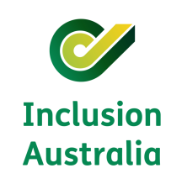Work capacity and future work capacity
Back to the A-Z of open employment
Work capacity is Centrelink’s assessment of how many hours of work you can do a week without support. Future work capacity is Centrelink’s assessment of how many hours you could work if you got Disability Employment Service (DES) support for up to two years.
Centrelink’s work capacity assessments are done as part of a Job Capacity Assessment (JCA), or as part of an Employment Services Assessment (ESAt).
Work capacity is either 0–7 a week or 8–14 hours a week.
If Centrelink thinks you can work 0–7 hours a week, it will ask if you want to work in an Australian Disability Enterprise (ADE). But if you want to work in open employment, you can ask Centrelink to refer you to a DESinstead.
If Centrelink thinks you can work 8–14 hours a week, it will refer you to a DES.
If you are an National Disability Insurance Scheme (NDIS) participant and you want to work in open employment but Centrelink doesn’t think you are ready, you can use your NDIS plan to develop more work skills and experience.
A Job Capacity Assessment (JCA) is a test Centrelink uses when people apply for the Disability Support Pension (DSP).Read more An Employment Services Assessment (ESAt) is a test done by Centrelink. This test helps Centrelink decide what kind of employment service you need to help you find and keep a job.
Read more An Australian Disability Enterprises (ADE) is a type of employment support for people with disability who need significant support to work.
Read more The Australian Government-funded disability insurance scheme that funds supports for eligible people with disability.
Read more Open employment is when people with and without disability work together in regular jobs.
Read more Every National Disability Insurance Scheme (NDIS) participant has an individual plan that lists their goals and the amount of funding the National Disability Insurance Agency (NDIA) has approved.
Read more


